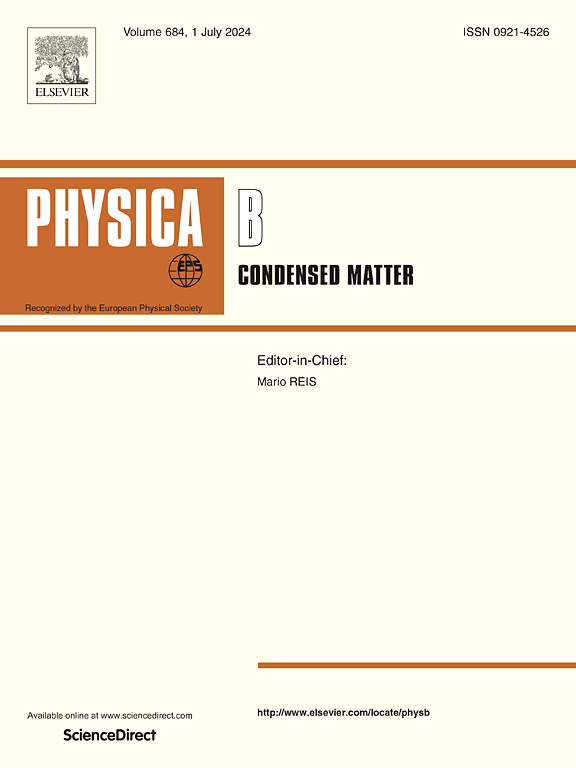Breaking the limits of HEMT performance: InGaN channel and back barrier engineering
IF 2.8
3区 物理与天体物理
Q2 PHYSICS, CONDENSED MATTER
引用次数: 0
Abstract
This simulation study explores the impact of indium composition on high-electron-mobility transistors (HEMTs) with an InGaN channel as well as an InGaN back barrier. The study comprises two sections. Firstly, four HEMT devices with variable indium content, such as 5 %, 7 %, 9 %, and 11 %, in the InGaN channel are analyzed. The energy band diagram, electron concentration, field distribution, and drain properties are examined. As the indium concentration increases from 5 % to 11 %, the drain current increases significantly from 1.450 A/mm to 2.275 A/mm, and the on-resistance decreases from 1.70 Ω mm to 1.40 Ω mm. Secondly, three back barrier designs with indium compositions of 17 %, 25 %, and 33 % are integrated with the 11 % indium channel HEMT device. The two-dimensional electron gas (2DEG) confinement is enhanced by using InGaN as a back barrier with variable indium concentration. Different drain curves, transfer properties, and transconductance curves are discussed by comparing HEMTs, with and without the back barrier. The device without a back barrier shows a peak transconductance of 384 mS/mm while the device with an In0.33Ga0.67N back barrier shows a peak transconductance of 326 mS/mm. These findings demonstrate the potential of strategically designed back barriers and variable indium concentration to fine-tune the performance of InGaN-based HEMTs for demanding power electronic applications.
求助全文
约1分钟内获得全文
求助全文
来源期刊

Physica B-condensed Matter
物理-物理:凝聚态物理
CiteScore
4.90
自引率
7.10%
发文量
703
审稿时长
44 days
期刊介绍:
Physica B: Condensed Matter comprises all condensed matter and material physics that involve theoretical, computational and experimental work.
Papers should contain further developments and a proper discussion on the physics of experimental or theoretical results in one of the following areas:
-Magnetism
-Materials physics
-Nanostructures and nanomaterials
-Optics and optical materials
-Quantum materials
-Semiconductors
-Strongly correlated systems
-Superconductivity
-Surfaces and interfaces
 求助内容:
求助内容: 应助结果提醒方式:
应助结果提醒方式:


